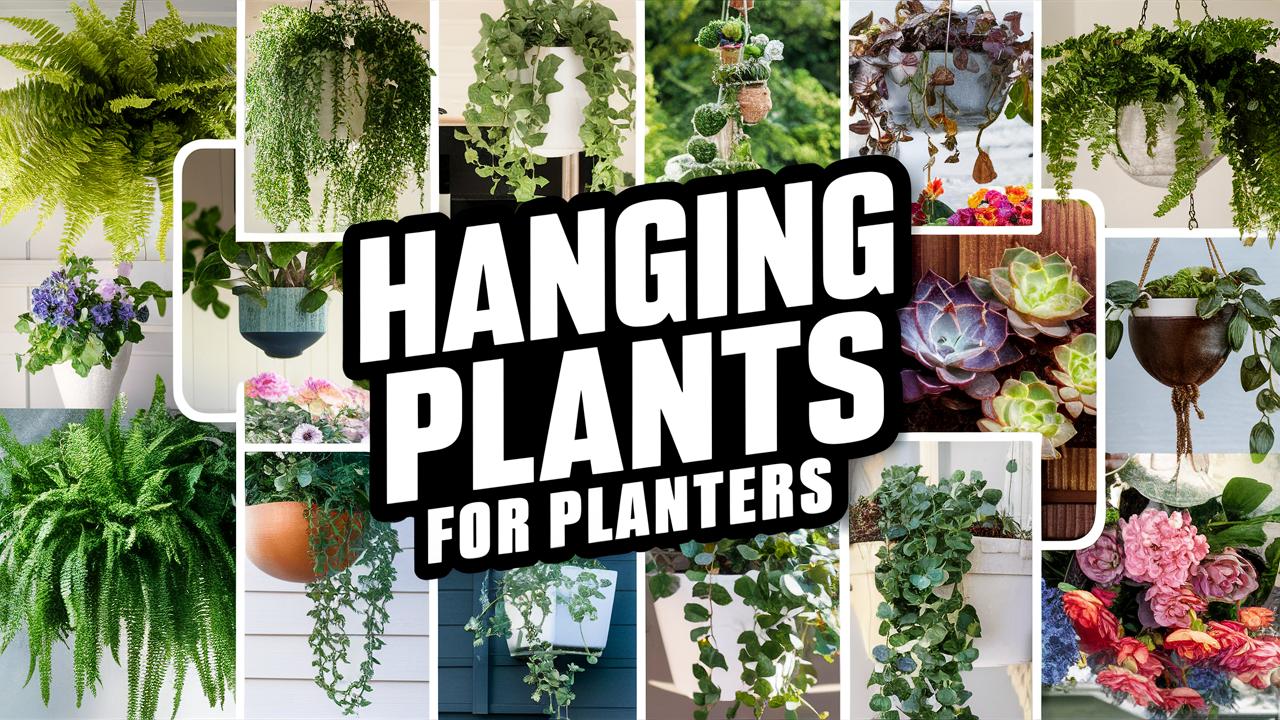In this guide, we will explore a variety of hanging plants, understanding their unique characteristics, care requirements, and the joy they bring to our lives. Let’s dive in!
Nasturtium
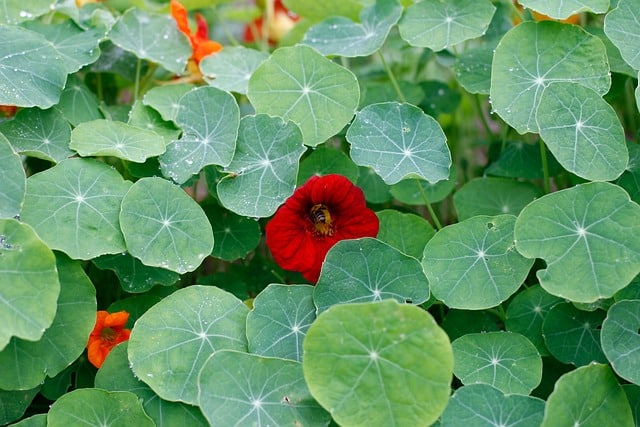
Nasturtium is a vibrant, easy-to-grow plant that offers not only stunning blossoms but also edible leaves and flowers. With their bright orange, yellow, and red flowers, nasturtiums create a unique display that stands out in any setting. These plants thrive in well-drained soil and are perfectly happy in hanging planters, where their trailing vines can cascade beautifully.
When it comes to care, nasturtiums prefer full sun and are quite drought-tolerant once established. They’re also known for their ability to attract beneficial insects, making them a fantastic addition to any garden space. Plus, if you’re looking to incorporate them into your culinary adventures, their peppery flavor can add a unique twist to salads and garnishes!
Ferns
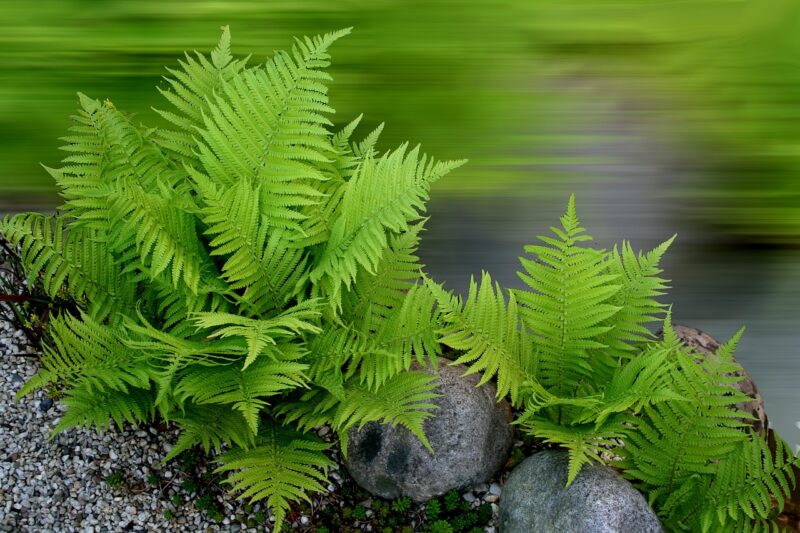
Ferns are classic hanging plants that are known for their lush, feathery leaves and ability to thrive in a variety of indoor and outdoor conditions. Among the many species, the Boston fern and bird’s nest fern are particularly popular for hanging planters. Their graceful fronds offer a soft and airy look, perfect for brightening up dimly lit areas.
These plants prefer indirect sunlight and humidity, making them ideal for bathrooms and shaded outdoor patios. Keeping the soil consistently moist, but not soggy, will help them flourish. Ferns can sometimes be misunderstood, requiring a bit more attention than some other plants, but their beauty is definitely worth the effort.
Dichondra Silver Falls
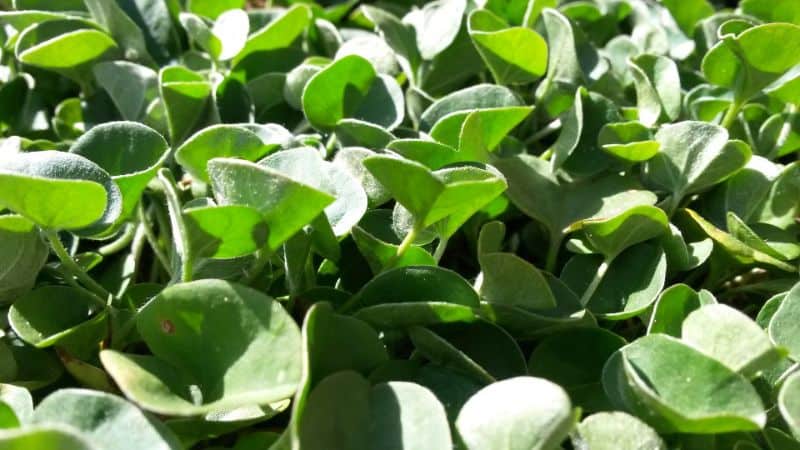
Dichondra Silver Falls is an enchanting trailing plant known for its stunning rounded leaves with a silvery sheen. This plant can drape beautifully over the edges of hanging planters, giving a wonderful cascading effect. With its low maintenance needs, it thrives in well-drained soil and is a great option for both full sun and partial shade conditions.
Ideal for summer displays, it can also tolerate some drought once established. The soft foliage adds a lightness to your hanging arrangements, and its unique color contrasts beautifully with vibrant flowering plants, creating a visually striking combination that makes your garden pop.
Sweet Potato Vine
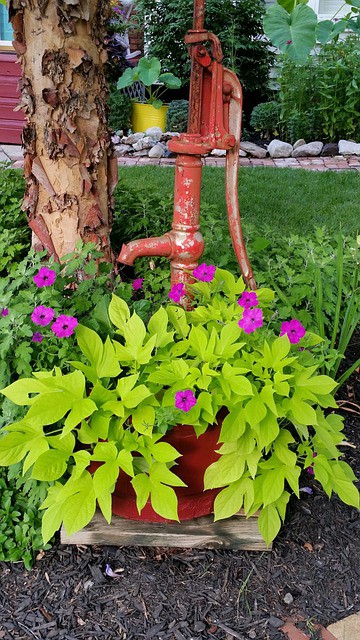
Sweet potato vines are not only decorative but also functional, with some varieties producing edible tubers. However, it’s their stunning foliage that makes them an ideal choice for hanging planters. Ranging from bright lime green to deep purple, these vines can create a beautiful tapestry of colors and textures.
These plants thrive in full sun and can tolerate a range of soil conditions. They grow rapidly, providing instant impact and coverage in your outdoor displays. One downside to keep in mind is their vigor—these plants can overtake other nearby plants, so it’s best to let them shine on their own in a designated planter.
Creeping Charlie
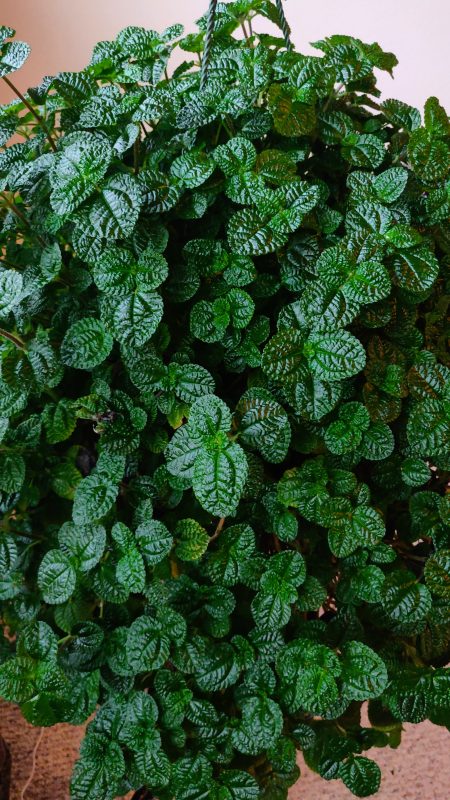
Creeping Charlie, or Glechoma hederacea, is an often-overlooked gem that makes an excellent hanging plant with its creeping habit and vibrant green leaves. It’s known for its rapid growth and ability to thrive in various conditions, making it a resilient choice for novice gardeners.
This plant thrives in moderate to full shade, providing a beautiful ground cover effect if allowed to trail over the edge of a hanging planter. It prefers moist, well-drained soil but can adapt to occasional dry spells. As a bonus, its lovely purple flowers in the spring add an extra pop of color!
Fuchsia
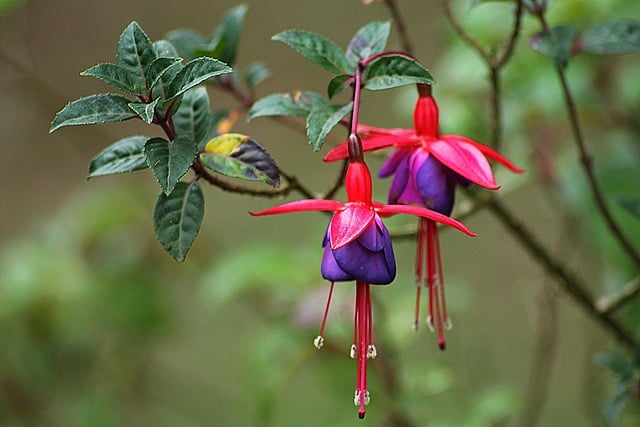
Fuchsias are a stunning choice for hanging planters, adored for their drooping, teardrop-shaped flowers that bloom in gorgeous hues of fuchsia, purple, and white. These plants are typically shade lovers, thriving in cooler, shadier spots and providing fabulous color throughout the summer months.
Caring for fuchsias involves ensuring they have consistently moist soil and protection from harsh winds and direct sunlight, which can scorch their leaves. With a little love and attention, fuchsia plants can develop into luscious, cascading displays that attract pollinators, adding vibrancy and life to your outdoor area.
Creeping Jenny
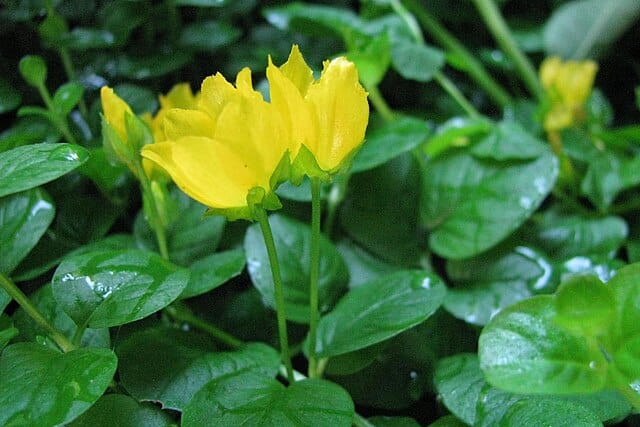
Creeping Jenny, or Lysimachia nummularia, is a ground-hugging plant often used in gardens for its ability to spread quickly and create a beautiful carpet of green. Its bright yellow flowers in spring offer an additional burst of color that can be enjoyed in hanging planters.
This adaptable plant prefers moist, well-drained soil and can thrive in both sun and shade. Its unique chartreuse leaves in spring and summer turn a warm golden hue in fall, making it a year-round visual treat. This versatility allows caregivers to utilize it in a variety of settings, ensuring a lively addition to both sunny and shady spots.
Jade Vine
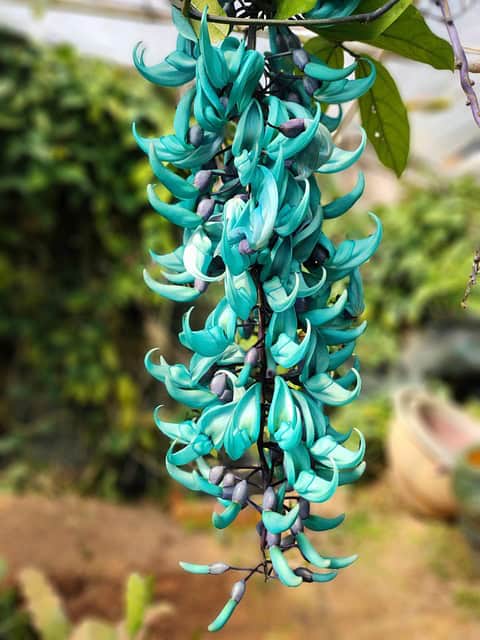
The jade vine, or Strongylodon macrobotrys, is renowned for its eye-catching blue-green flowers that resemble cascading clusters of jewels. Known as a tropical native, this stunning plant is best suited for hanging planters where its unique blooms can radiate beauty and draw attention.
While jade vines require a bit more care than some standard hangers, their exotic appearance and sweet fragrance are well worth it. They thrive in well-drained soil with plenty of sunlight and love a consistent watering schedule. Though they do take patience to get established, the rewards of their unique flowers make them a truly singular choice.
Licorice Plant
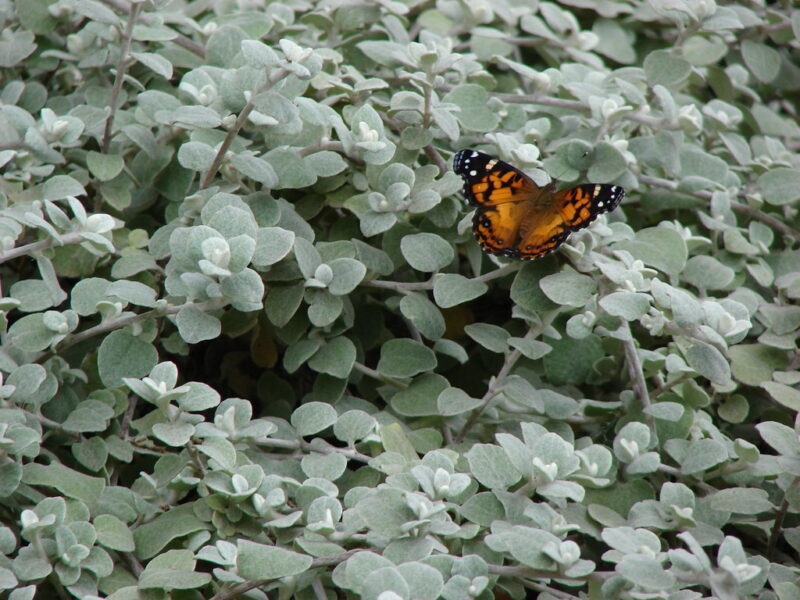
Licorice plants (Helichrysum petiolare) are loved for their charming gray-green foliage and trailing growth. Their slightly fuzzy leaves give a unique texture that contrasts beautifully with other flowering plants, making them a lovely addition to mixed planters.
These plants prefer well-drained soil and thrive in sunny environments. They are drought-tolerant, which means they can handle periods of neglect. To keep your licorice plant looking lush, a light trim in early spring can help maintain its shape and promote bushier growth for a fuller effect in hanging planters.
Parrot’s Beak
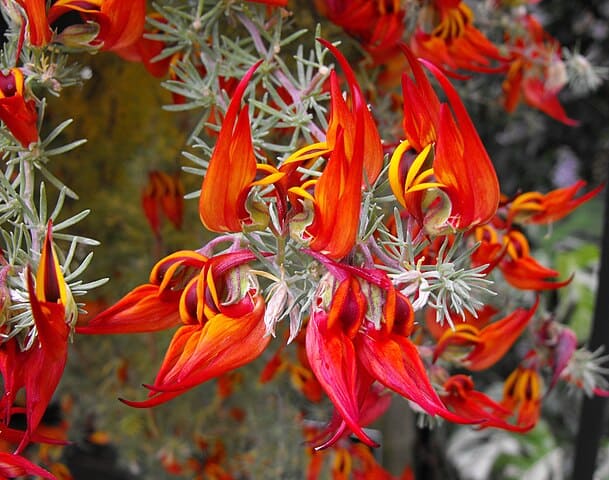
Parrot’s beak, or Lotus berthelotii, is a stunning trailing succulent that features vibrant foliage and eye-catching red-orange flowers. Its unique growth habit and whimsical shape make it a favorite choice for hanging planters, drawing attention wherever it’s displayed.
This plant thrives in well-draining soil and prefers bright but indirect sunlight, making it an outstanding performer on covered patios or porches. Slight drought-tolerance allows it to thrive with minimal care, making it suitable for both new and seasoned gardeners who want a low-maintenance but visually exciting option.
Pothos
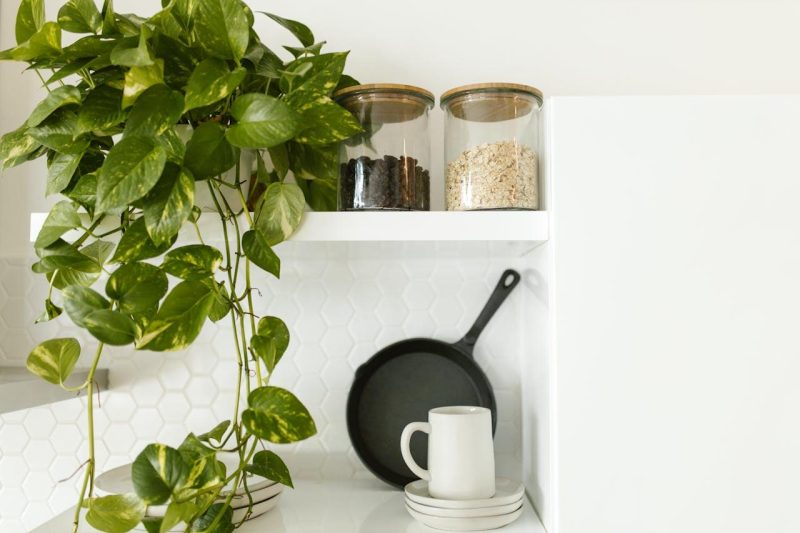
Pothos, or Epipremnum aureum, is one of the most popular indoor plants worldwide— and for good reason! With its heart-shaped leaves and lush trailing vines that can grow several feet long, pothos is a great choice for hanging planters. Common varieties vary in color from solid greens to variegated forms with splashes of yellow or white.
This hardy plant can thrive in various light conditions, from low light to bright indirect sunlight, making it an incredibly versatile choice for any space. Pothos is also forgiving when it comes to watering, making it perfect for busy plant parents. Just be mindful of overwatering, and you’ll have a thriving display that’s stunning and easy to grow!
Philodendron
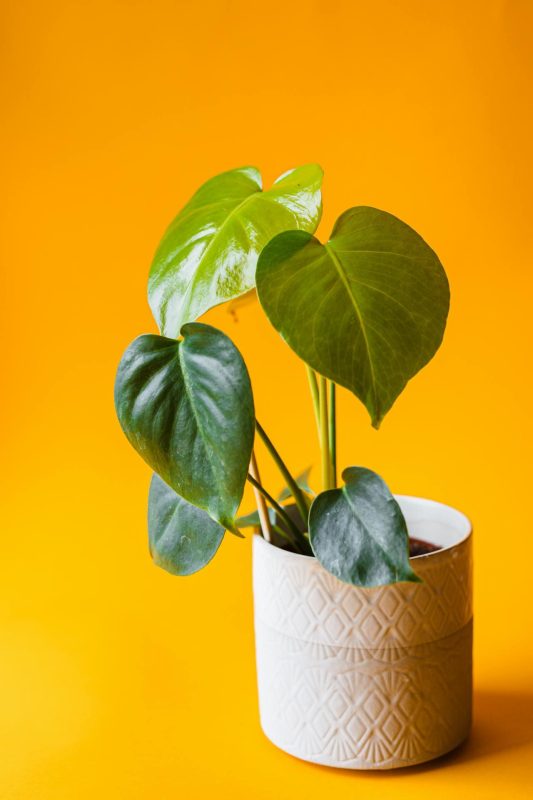
Philodendrons boast an extensive range of styles and sizes, making them a favorite for hanging planters. Known for their lush foliage and trailing habits, they bring a sense of tropical elegance to homes and gardens. Varieties such as the heartleaf philodendron are particularly popular due to their ease of care and beautiful, glossy leaves.
Philodendrons thrive in indirect sunlight and need well-draining soil to avoid root rot. They prefer humidity but can adapt to average household conditions. Regular pruning helps maintain their shape and encourages more growth, ensuring your hanging planter remains full and vibrant throughout the growing season.
Wojo’s Gem Periwinkle
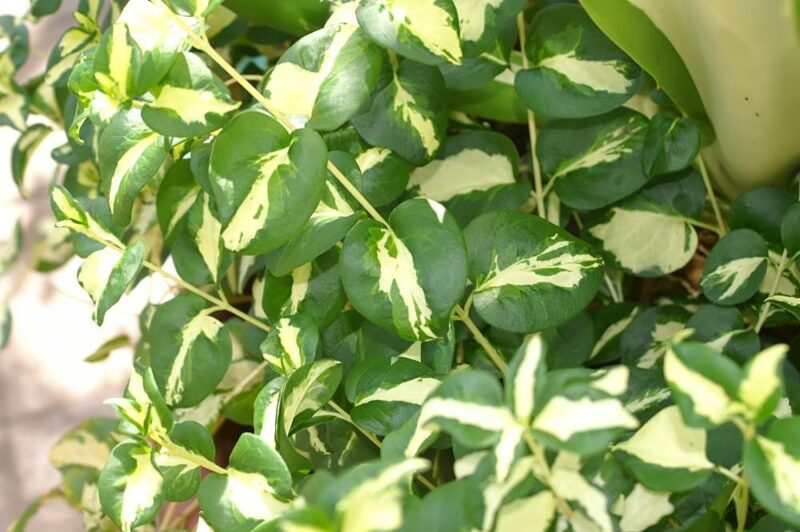
Wojo’s Gem periwinkle (Vinca minor ‘Wojo’s Gem’) offers something truly special with its delightful variegated leaves. This perennial is perfect for hanging planters, featuring striking green and creamy-white foliage that truly stands out. During the spring and summer months, you’ll be rewarded with charming blue-violet flowers that add even more visual appeal.
This plant prefers well-drained soil and can grow in both sun and shade, showcasing its versatility. Moderately drought-tolerant once established, Wojo’s Gem is an excellent choice for gardeners looking for both beauty and hardiness. Regular trimming will keep this plant looking tidy and encourage flowering, ensuring a stunning display in your hanging planters.
Spider Plant
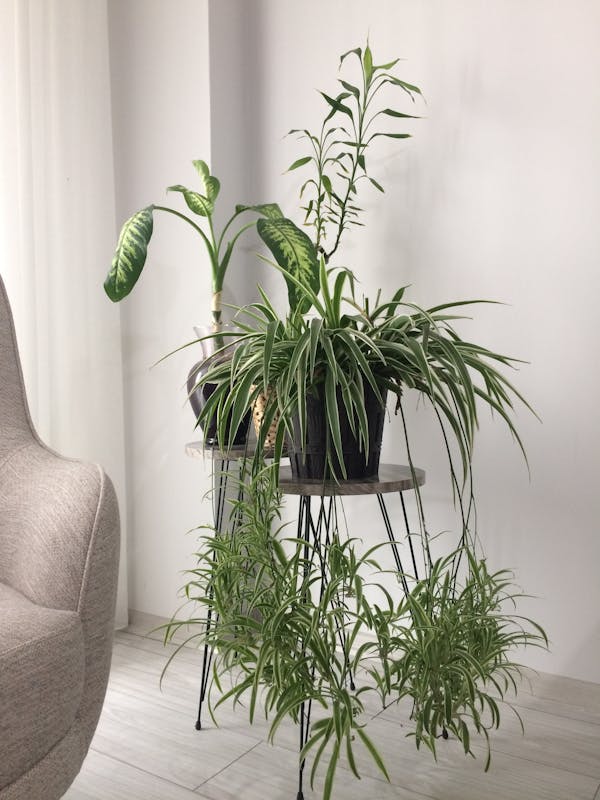
The spider plant (Chlorophytum comosum) is not only one of the easiest houseplants to care for, but it also makes for a stunning hanging plant thanks to its long, arching leaves and baby spiderettes that can trail down elegantly. With its striking green and white striped foliage, this plant is a natural air purifier, improving indoor air quality as it thrives.
Spider plants prefer indirect light and well-draining soil. They’re drought-tolerant and can handle typical household humidity levels, making them ideal for beginners. With minimal care, these plants can produce offspring, allowing you to propagate new plants from the spiderettes to share with friends or expand your greenery collection.
Inch Plant

Inch plants, or Tradescantia zebrina, are known for their vibrant, colorful leaves that feature deep green and silvery stripes, making them an excellent choice for hanging planters. This fast-growing plant produces long trailing stems that can create a full lush cascade, making them perfect for adding life to your home.
These plants prefer bright, indirect light but can tolerate lower light levels, which makes them versatile for various indoor settings. With regular watering— allowing the soil to dry slightly between waterings— you’ll have a thriving inch plant ready to brighten up your living space.
String of Pearls
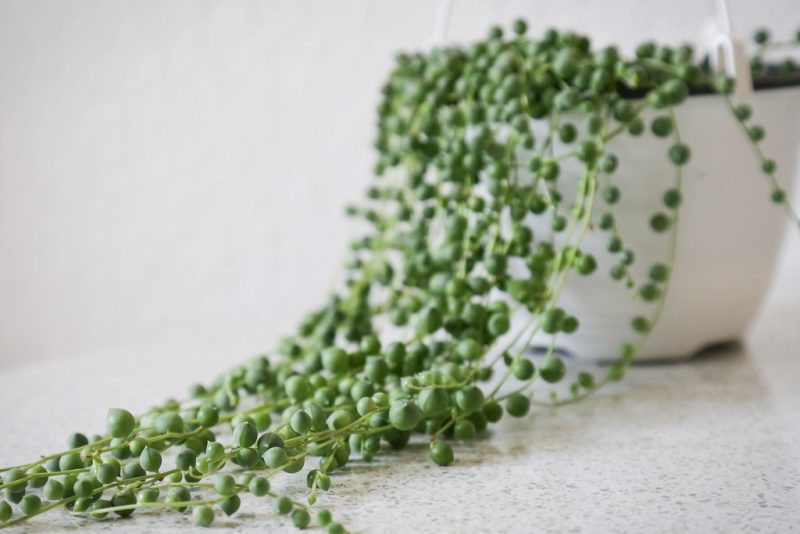
The string of pearls (Senecio rowleyanus) is a popular succulent known for its unique, bead-like foliage that creates a stunning cascading effect when grown in hanging planters. These intriguing plants thrive in direct sunlight and well-draining soil, making them a great choice for bright spots in your home or garden.
Low maintenance and drought-tolerant, string of pearls are perfect for individuals who lead busy lives and are looking for a visually striking plant that requires minimal care. Just ensure not to overwater, as this can lead to root rot, and you’ll be rewarded with a stunning display of green pearls.
Sweet Caroline Purple
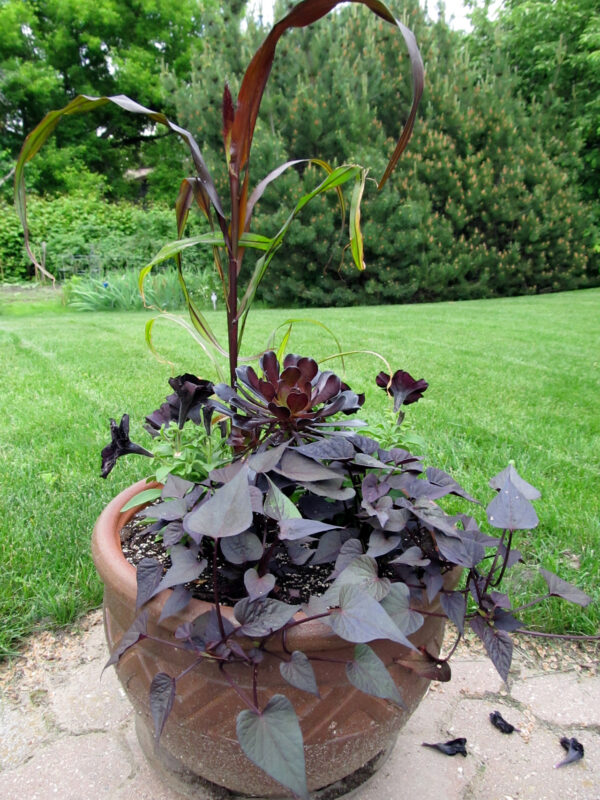
Sweet Caroline Purple is a beautiful ornamental sweet potato vine that boasts rich purple foliage. It is an ideal choice for hanging planters due to its trailing growth habit and bold color, creating a vibrant contrast against other plants or flowers.
This plant thrives in full sun and well-drained soil, similar to other sweet potato vines, and can acclimate to warmer temperatures. Its fast growth and ability to tolerate some drought once established make it a low-maintenance favorite that can liven up any garden space or patio.
Turtle Vine

Turtle vine, or Callisia repens, offers a unique texture and color to your plant collection. It has trailing stems that produce small, attractive green and purple variegated leaves, making it a stylish option for hanging planters.
This plant thrives in bright, indirect light and only needs moderate watering, allowing the soil to dry out between waterings. Its captivating appearance, coupled with its ease of care, makes the turtle vine a perfect choice for plant enthusiasts looking to add character to their space.
Burro’s Tail

Burro’s tail (Sedum morganianum) is a succulent known for its plump, trailing leaves that resemble a donkey’s tail. This plant’s beautiful green foliage and impressive length make it a fantastic choice for any hanging planter.
Burro’s tail prefers bright, indirect sunlight and requires well-draining soil to thrive. Similar to many succulents, deep watering followed by periods of drought is key to its care. These plants are relatively hardy and can tolerate neglect, making them a popular choice for busy plant caregivers.
Rope Hoya
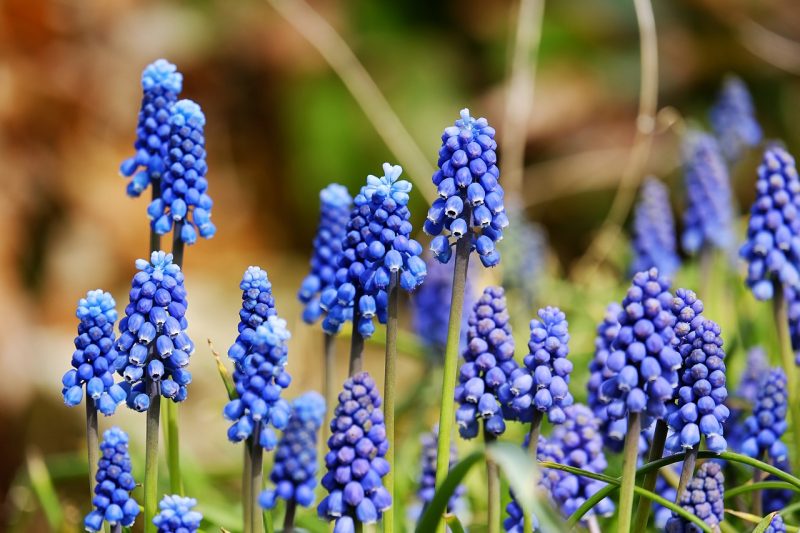
Rope hoya (Hoya carnosa ‘Compacta’) is an intriguing plant that features thick, waxy leaves and trailing vines, making it perfect for hanging planters. This plant grows in a unique spiral shape, creating an eye-catching display when its long tendrils are allowed to cascade over the edges of a planter.
Thriving in bright, indirect light, rope hoyas enjoy humidity and benefit from being watered less frequently. Their unique flowers emerge occasionally and are scented, providing an additional delight for any plant lover. The combination of its unusual growth pattern and beautiful blooms makes it a delightful addition to your home.
Cherry Tomatoes
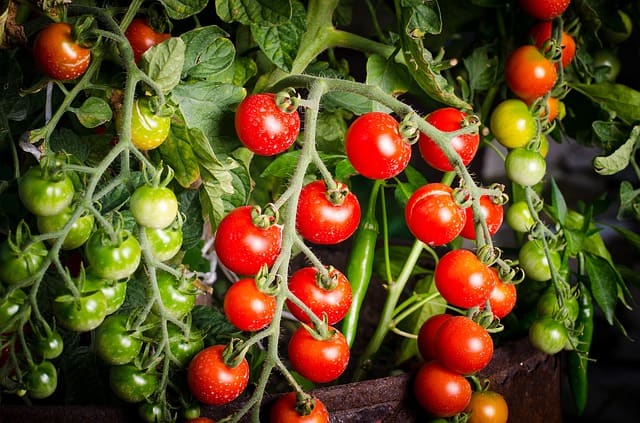
Hanging cherry tomato plants not only bring the joy of gardening but also yield delightful, sweet fruit right from the source. These plants are perfect for those with limited space but a desire for fresh produce.
Tomatoes thrive in full sun, requiring well-drained soil and consistent watering to prevent drought stress during their growth period. Hanging planters provide the ideal conditions for cherry tomatoes, as they can have the space to spread and grow while encouraging proper drainage. With the right care, you can enjoy flavorful tomatoes throughout the summer months.
Black-Eyed Susan
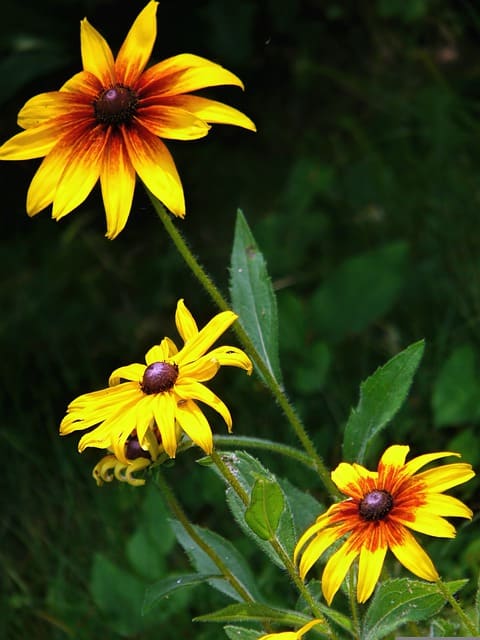
Black-eyed Susan (Rudbeckia hirta) is a popular flowering plant that thrives in hanging planters, showcasing its striking yellow petals and dark centers. These flowering plants add a cheerful touch to any garden, attracting pollinators throughout the summer.
Black-eyed Susans thrive in full sun and well-drained soil, requiring moderate watering throughout their growing season. Investing a bit of time and care into these vibrant plants will reward you with stunning blooms and a sense of joy every time you catch a glimpse of their bright foliage.
Lobelia
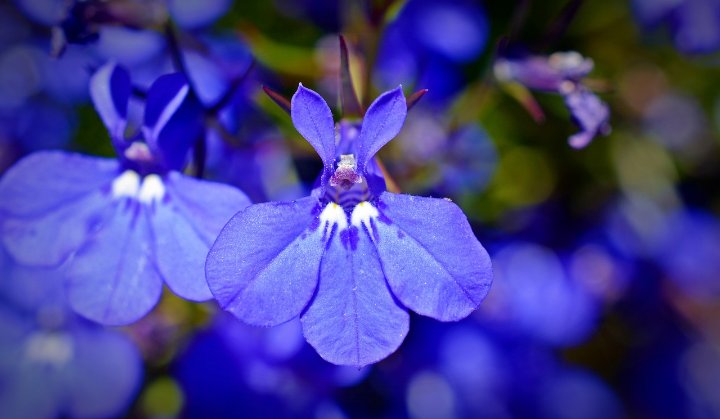
Lobelia is widely known for its dazzling sapphire-blue flowers and delicate trailing form, making it a stunning choice for hanging planters. Popular for both its beauty and adaptability, lobelia thrives in a variety of conditions, creating eye-catching displays throughout the growing season.
This plant prefers cooler weather and partial shade, making it suitable for those who want colorful blooms even in shaded areas. Regular watering will help keep these flowers vibrant and healthy, producing a beautiful display that can enhance any outdoor or indoor space.
Chenille Plant
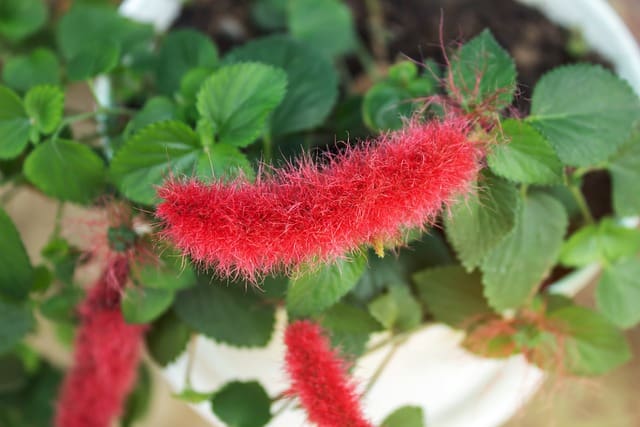
The chenille plant, or Acalypha hispida, offers a unique texture and color to your arrangments, with its long, fuzzy, red flower spikes. Often referred to as “cat’s tail,” this eye-catching plant can dramatically enhance your hanging planters.
Preferred for its bright, indirect sunlight and the need for consistently moist soil, the chenille plant will thrive in a warm environment. Providing regular care will reward you with stunning spikes that hang gracefully. Its unique appearance adds charm to any arrangement and captivates the attention of both plant enthusiasts and casual observers alike.
Verbena

Verbena is a lovely flowering plant known for its clusters of bright blooms that bring color and joy to your hanging planters. Available in various shades, verbena’s cheerful disposition makes it a go-to for those looking to enhance their outdoor displays.
These plants thrive in full sun and well-draining soil, but they’re also tolerant of drought conditions once established. Regular deadheading encourages more blooms and helps keep the plants looking fresh and vibrant throughout the summer. Verbena offers a delightful and colorful addition that will make your garden shine.
Goldfish Plant
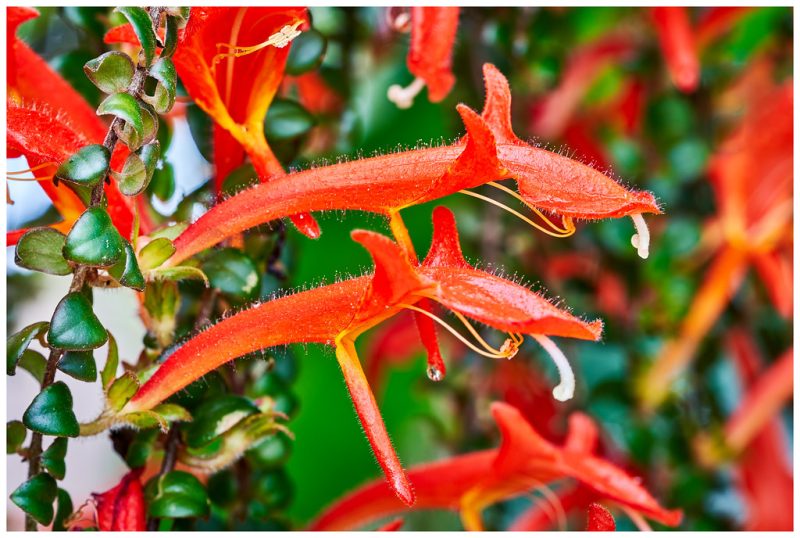
The goldfish plant (Columnea gloriosa) is a particularly enchanting choice for hanging planters, as its unique trumpet-shaped flowers resemble little goldfish swimming amidst the green foliage. This plant is a show-stopper in every sense of the word and adds a whimsical touch to your collection.
Goldfish plants thrive in bright, indirect light and love humidity; making them ideal candidates for indoor spaces like kitchens or bathrooms. Keeping the soil consistently moist will allow these plants to thrive and flourish. With proper care, they can provide delightful blooms year-round, adding charm and intrigue to the space they inhabit.


